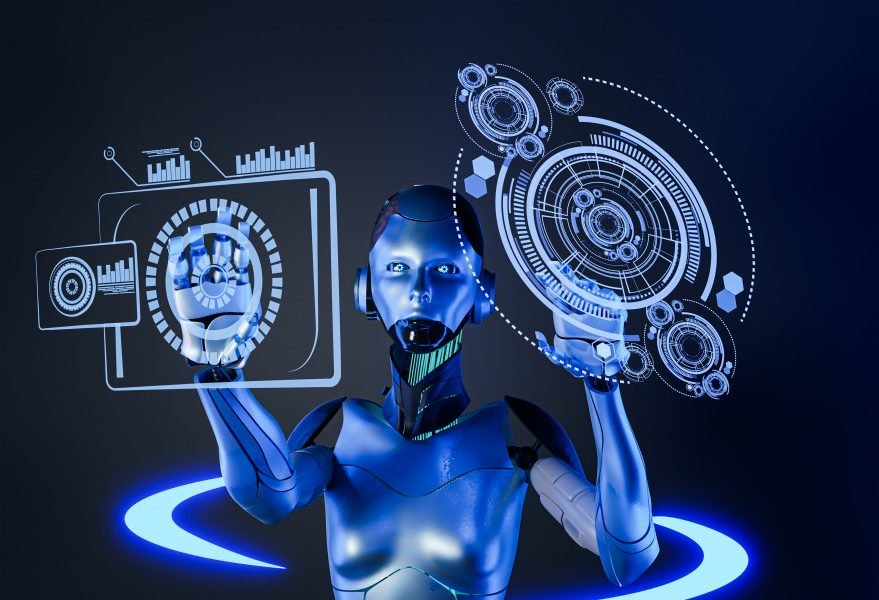Introducing Mistral AI: The Revolutionary AI Startup Making Waves in 2023 and Beyond
Founded by former Google DeepMind and Meta professionals, Mistral AI, based in Paris, has been redefining the AI landscape since 2023.
Mistral AI made a grand entrance onto the AI scene with the launch of its groundbreaking Mistral 7B model in 2023. This innovative 7-billion parameter model quickly gained acclaim for its exceptional performance, outperforming larger models like Llama 2 13B in various benchmarks and even rivaling Llama 1 34B in several metrics. What set Mistral 7B apart was not only its performance but also its accessibility – researchers and developers worldwide could easily access the model through GitHub or a 13.4-gigabyte torrent download.
Taking a unique approach to releases by eschewing traditional papers, blogs, or press releases, Mistral AI has successfully captured the attention of the AI community. Their dedication to open-source principles has solidified Mistral AI’s position as a key player in the AI industry.
The company’s recent funding milestones further underscore its rapid rise in the field. Following a funding round led by Andreessen Horowitz, Mistral AI reached an astounding $2 billion valuation, following a record-breaking $118 million seed round, the largest in European history. This demonstrates the immense confidence investors have in Mistral AI’s vision and capabilities.
In the realm of policy advocacy, Mistral AI has actively participated in shaping AI policy discussions, particularly the EU AI Act, advocating for reduced regulation in open-source AI.
Fast forward to 2024, Mistral AI has once again raised the bar with the launch of two groundbreaking models: Mistral Large 2 and Mistral NeMo. In this in-depth guide, we’ll explore the features, performance, and potential applications of these cutting-edge AI models.
Key Features of Mistral Large 2:
– 123 billion parameters
– 128k context window
– Support for multiple languages
– Proficiency in 80+ coding languages
– Advanced function calling capabilities
Designed to push the boundaries of cost efficiency, speed, and performance, Mistral Large 2 is an appealing option for researchers and enterprises seeking advanced AI solutions.
Mistral NeMo: The New Smaller Model
Mistral NeMo, unveiled in July 2024, offers a different approach as a more compact 12 billion parameter model developed in collaboration with NVIDIA. Despite its smaller size, Mistral NeMo delivers impressive capabilities, including state-of-the-art performance, an Apache 2.0 license for open use, and quantization-aware training for efficient inference. Positioned as a drop-in replacement for Mistral 7B, Mistral NeMo maintains enhanced performance while retaining ease of use and compatibility.
Both Mistral Large 2 and Mistral NeMo share key features that set them apart in the AI landscape, such as large context windows, multilingual support, advanced coding capabilities, instruction following, function calling, and enhanced reasoning and problem-solving capabilities.
To fully understand the capabilities of Mistral Large 2 and Mistral NeMo, it’s crucial to examine their performance across various benchmarks. Mistral Large 2 excels in different programming languages, competing with models like Llama 3.1 and GPT-4o. On the other hand, Mistral NeMo sets a new benchmark in its size category, outperforming other pre-trained models like Gemma 2 9B and Llama 3 8B in various tasks.
Mistral Large 2 and Mistral NeMo’s exceptional multilingual capabilities are a standout feature, enabling coherent and contextually relevant outputs in various languages. Both models are readily available on platforms like Hugging Face, Mistral AI’s platform, and major cloud service providers, facilitating easy access for developers.
Embracing an agentic-centric design, Mistral Large 2 and Mistral NeMo represent a paradigm shift in AI interaction. Native support for function calling allows these models to dynamically interact with external tools and services, expanding their capabilities beyond simple text generation.
Mistral NeMo introduces Tekken, a new tokenizer offering improved text compression efficiency for multiple languages. This enhanced tokenization efficiency translates to better model performance when dealing with multilingual text and source code.
Mistral Large 2 and Mistral NeMo offer different licensing models, suitable for various use cases. Developers can access these models through platforms like Hugging Face, Mistral AI, and major cloud service providers.
In conclusion, Mistral Large 2 and Mistral NeMo represent a leap forward in AI technology, offering unprecedented capabilities for a wide range of applications. By leveraging these advanced models and following best practices, developers can harness the power of Mistral AI for their specific needs.
-
What is the Mistral 2 and Mistral NeMo guide all about?
The Mistral 2 and Mistral NeMo guide is a comprehensive resource that provides in-depth information about the latest LLM (Master of Laws) program coming from Paris, including program structure, course offerings, faculty profiles, and application requirements. -
Who is the target audience for this guide?
This guide is designed for prospective students interested in pursuing a Master of Laws degree at Mistral 2 and Mistral NeMo in Paris. It also serves as a valuable resource for current students, alumni, and anyone interested in learning more about this prestigious LLM program. -
What sets Mistral 2 and Mistral NeMo apart from other LLM programs?
Mistral 2 and Mistral NeMo stand out for their highly respected faculty, innovative curriculum, and strong focus on international and comparative law. The program offers unique opportunities for students to immerse themselves in the legal systems of multiple countries and gain valuable global perspectives on legal issues. -
How can I apply for admission to Mistral 2 and Mistral NeMo?
The admission process for Mistral 2 and Mistral NeMo typically involves submitting an application through the program’s online portal, along with supporting documents such as transcripts, letters of recommendation, and a personal statement. Applicants may also be required to participate in an interview as part of the selection process. - What career opportunities are available to graduates of Mistral 2 and Mistral NeMo?
Graduates of Mistral 2 and Mistral NeMo have gone on to pursue rewarding careers in a variety of legal fields, including international law, human rights advocacy, corporate law, and academia. The program’s strong reputation and alumni network open doors to a wide range of professional opportunities both in France and around the world.









